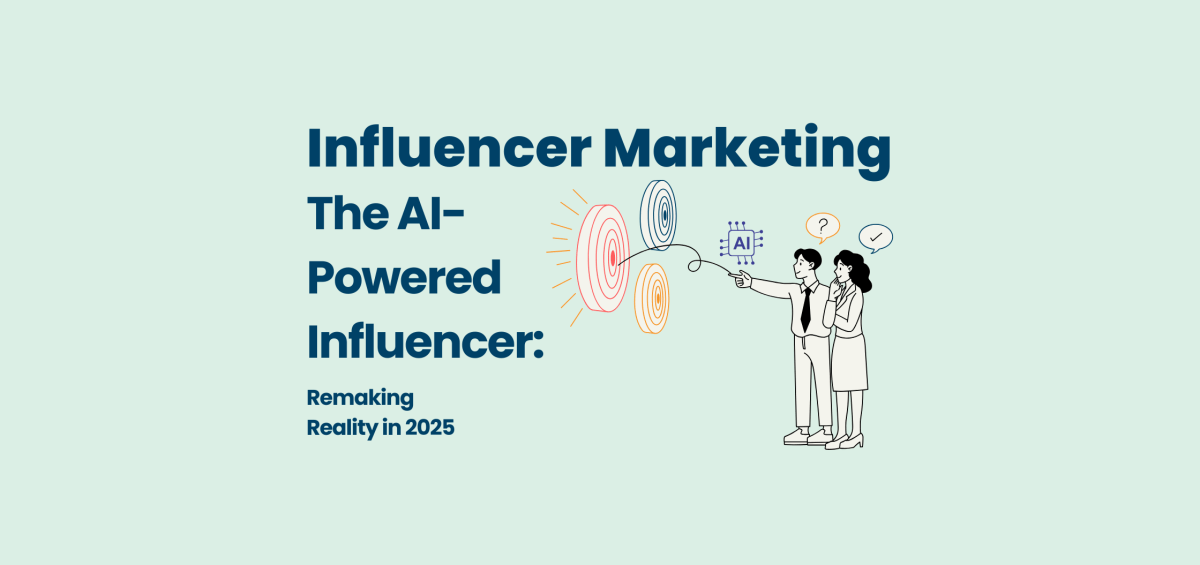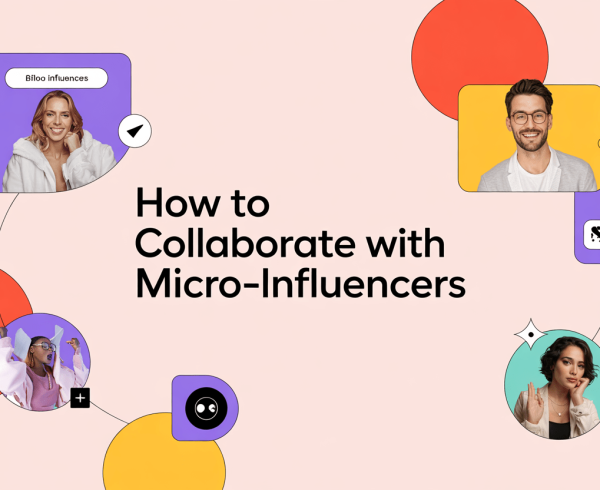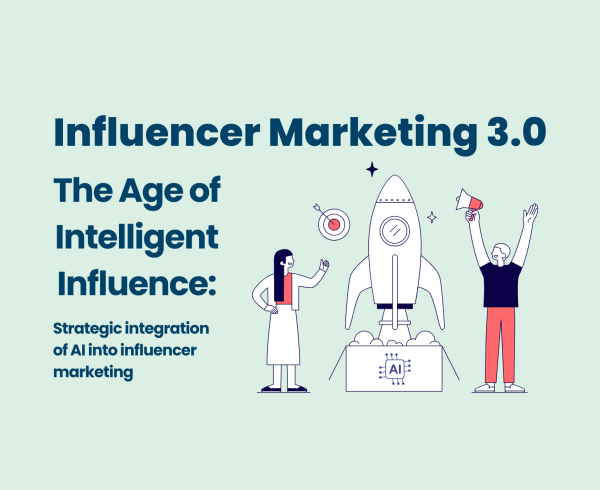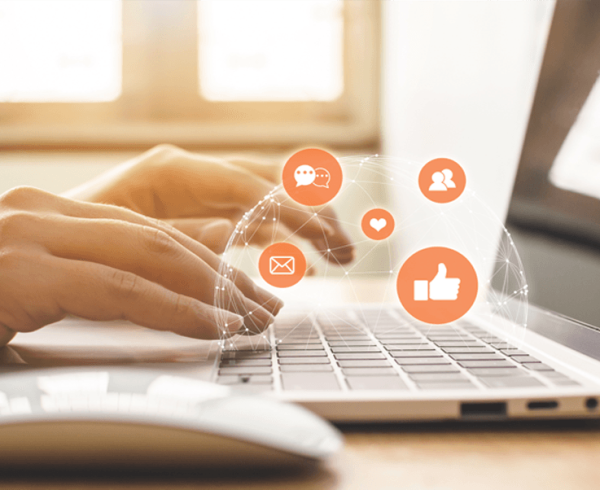2025 marks a significant turning point in the realm of influencer marketing, characterised by a profound and pervasive integration of Artificial Intelligence (AI). This evolution transcends mere automation, positioning AI as a central driving force behind creativity, personalisation, and audience interaction. As we move through 2025 and look toward the future, the influencer is no longer solely a human content creator but increasingly an AI-powered entity or a human significantly augmented by AI, reshaping digital engagement and redefining the boundaries of online influence.
This report delves into the key areas of this transformation, including the revolution in content creation catalysed by AI, the rise of hyper-personalised audience experiences, the orchestration of omnichannel presence through AI, and the power of data-driven influence and return on investment (ROI) unlocked by AI analytics. Furthermore, it examines the evolving identity of the influencer, encompassing AI-augmented humans, the emergence of specialised AI personas, and the impact of decentralised influence networks powered by blockchain technology.
While this new era presents vast opportunities for enhanced engagement and efficiency, it also introduces complex challenges, notably concerning authenticity, ethical considerations, and the integration of immersive technologies like virtual and augmented reality. Ultimately, this analysis underscores the transformative potential of AI in remaking the digital landscape of influence—with important implications for any Influencer Marketing Agency navigating this future.
The Creative Revolution: AI as the Engine of Content Innovation
AI Writing Tools for Script and Storyboard Generation
The role of AI in influencer marketing has moved far beyond simple task automation, now serving as a crucial partner in the creative process. As we progress through 2025, influencers are extensively utilising advanced AI writing tools that possess capabilities far exceeding basic grammar and spell checks. These sophisticated platforms function as co-writers, capable of generating scripts, developing plot points, refining dialogue, and even adapting content to suit different cultural contexts in real-time.
Tools like Jasper, Copy.ai, Rytr, Writesonic, and Anyword, prominent in 2024, offer features tailored for marketing communications, SEO content, blog posts, social media updates, and even creative storytelling. Jasper, for instance, assists with brainstorming and can refine dialogue by analysing speech patterns and character voices. Copy.ai is specifically designed to generate high-quality marketing copy, while Rytr allows users to customise the tone, style, and length of their content in multiple languages. Writesonic excels in character profile generation and scene building, catering to a wide range of content needs.
These tools often operate on subscription-based models, offering various tiers of access to features and functionalities. Free options like ToolBaz and free trials from other platforms provide accessibility for influencers with varying budgets. The widespread availability and increasing sophistication of these AI writing assistants indicate a significant trend towards their integration into the daily workflows of influencers by March 2025, providing readily available and increasingly advanced content creation capabilities.
Furthermore, the creation of visually compelling narratives is being revolutionised by AI-powered storyboard generators. As 2025 unfolds and we look ahead to 2026, influencers are leveraging tools like Boords, Storyboarder, Canva, Wonder Unit, Milanote, Plot, StoryboardHero, Runway ML, Adobe Sensei, Shai, and Celtx to transform their scripts and ideas into visual sequences. Boords, recognised as a leading option in 2024, can generate storyboards from simple text prompts and even maintain character consistency across frames using AI Character Guidelines. Storyboarder is a free and open-source tool particularly suited for beginners, allowing for sketching and the addition of dialogue and timing to each frame.
AI-Powered Visual Tools
Beyond scriptwriting and storyboarding, the trend of AI assistance extends to broader visual content creation. As we observe the rapid advances in the first quarter of 2025, influencers are benefiting from sophisticated AI-powered platforms capable of generating stunning graphics, performing cinematic-quality video editing, and even creating entirely new forms of digital art with minimal human input. This empowers creators to produce visually compelling content with greater ease and speed, further elevating the overall quality and sophistication of influencer marketing campaigns.
The Era of Hyper-Personalisation: AI Crafting Individualised Experiences
AI Platforms Analysing User Data
In the current landscape of 2025, influencers are leveraging the power of AI to an unprecedented degree to craft highly personalised experiences for each follower. AI-driven platforms are now adept at analysing vast amounts of individual user data, including preferences, behaviours, and even emotional responses, to deliver tailored content, recommendations, and interactions. This mirrors the techniques employed by major platforms like Netflix and Spotify, which use AI to recommend movies, TV shows, and music based on user history.
AI algorithms, utilising machine learning, natural language processing (NLP), and predictive analytics, identify patterns and user behaviour trends to segment audiences and provide personalised recommendations. By March 2025, influencers are employing these AI personalisation techniques to deliver highly tailored content, thereby fostering deeper engagement with their followers. The increasing accessibility and affordability of these AI tools enable influencers to move beyond generic content and create experiences that resonate more profoundly with individual audience members.
Real-Time Content Adaptation and AI-Powered Avatars
The landscape of influencer marketing as we navigate through 2025 features influencers whose content can adapt in real-time based on a viewer’s mood, alongside AI-powered avatars capable of interacting as personal friends. This level of dynamic personalisation is made possible by advancements in Emotion AI, a field focused on recognising and interpreting human emotions through the analysis of facial expressions, voice tones, and text sentiment.
Emotion AI helps creators understand which elements of their content elicit positive emotions, allowing them to tailor their work to maximise engagement. Tools like MorphCast, Affectiva, Imentiv AI, and BytePlus Effects provide capabilities for real-time emotion analysis, enabling content optimisation and personalisation. By March 2025, the sophistication of Emotion AI allows for a new level of hyper-personalisation, where influencer content and interactions are dynamically adjusted based on the real-time emotional analysis of the audience, leading to unprecedented levels of engagement and loyalty.
Omnichannel Orchestration: AI Managing a Unified Brand Presence
AI-Driven Presence Across Multiple Channels
As we move deeper into 2025 and anticipate future developments, influencers are no longer confined to a single social media platform. AI now plays a crucial role in orchestrating their presence across multiple channels, creating seamless and consistent experiences for their audience. This is facilitated by the rise of AI virtual avatars and holographic projections. AI virtual avatars, carefully crafted digital entities, have become a significant part of the influencer ecosystem. These AI-generated personas possess realistic appearances and personalities, allowing them to engage with audiences on social media, promote brands, and create content much like human influencers.
Table 1: Top Virtual Influencers in 2025
| Name | Platform with Highest Following | Niche | Key Brand Partnerships |
|---|---|---|---|
| Lu do Magalu | Facebook (14 million) | Retail/Lifestyle | Magazine Luiza |
| Lil Miquela | Instagram (2.6 million) | Fashion/Music/Activism | Prada, Calvin Klein, Chanel |
| Imma | Instagram (397k) | Fashion/Lifestyle | IKEA, Porsche, Dior |
| Shudu | Instagram (242k) | Fashion/Beauty | Balmain, Fenty Beauty |
| Rozy | Instagram (159k) | Sustainability/Fashion | Eco-friendly brands |
Furthermore, AI holographic projections are emerging as a technology that allows influencers to extend their presence beyond the digital realm. These projections enable influencers to “appear” at multiple events or locations simultaneously, overcoming the limitations of time and geography faced by human influencers. Looking at the emerging trends in the first quarter of 2025 and projecting forward, AI-powered avatars and holographic projections are enabling influencers to extend their presence beyond traditional social media platforms into virtual worlds and physical events, creating a truly omnichannel experience that maximises reach and brand cohesion.
Seamless and Consistent Brand Experience
The ability to maintain a seamless and consistent brand experience across all these channels is crucial for maximising reach and building a strong brand identity. As 2025 progresses, influencers are increasingly relying on sophisticated omnichannel marketing platforms to manage their unified brand presence. These platforms provide features such as 24/7 AI chatbots for lead engagement, personalised experiences tailored to user preferences, and automated lead routing, ensuring efficient and consistent communication across all touchpoints.
Data-Driven Influence: AI Unlocking Measurable ROI
AI-Powered Analytics Dashboards
In 2025, the effectiveness of influencer marketing is increasingly being measured through granular insights provided by AI-powered analytics dashboards. These tools go far beyond basic vanity metrics, offering a comprehensive understanding of campaign performance. Platforms like StarScout.ai and StarNgage.com provide features such as advanced influencer search, audience authenticity analysis, detailed demographic insights, real-time campaign tracking, and ROI analysis.
By 2025, influencers and brands have access to these advanced AI-powered analytics dashboards, which offer comprehensive data on campaign performance, enabling precise optimisation and accurate ROI measurement. This data-driven approach allows for a more strategic and accountable form of influencer marketing.
Tracking Engagement, Predicting Trends, and Measuring ROI
These AI-powered analytics dashboards are capable of tracking real-time audience engagement, predicting future trends, and measuring the impact of influencer activity on brand perception and sales, moving far beyond simple metrics like likes and followers. Predictive analytics, powered by AI solutions like StarNgage.ai’s Virtual Influencer tools, allow for innovative content creation that resonates with specific audience demographics. StarNgage.ai’s photo and video creation capabilities enable brands to generate compelling virtual influencer content tailored to different market segments, significantly enhancing engagement rates.
In this pivotal moment of 2025, with industry innovations accelerating rapidly, the integration of platforms like StarScout.ai for real-time influencer discovery and StarNgage.com’s comprehensive Creator Marketing Suite enables more strategic and accountable influencer marketing campaigns, shifting away from subjective assessments towards data-backed results. These platforms have become industry standards for marketers seeking quantifiable returns from their influencer partnerships, with adoption rates expected to surge throughout the remainder of 2025 and beyond. This allows brands to optimise their investments and demonstrate the tangible impact of their influencer marketing efforts on key business outcomes.
The Evolving Identity of the Influencer: Human and Artificial Collaborations
The AI-Augmented Human
The dominant form of influencer in early 2025, with clear indications of continued evolution throughout the year, is the AI-augmented human. These creators leverage AI not as a replacement but as a powerful extension of themselves, enhancing their creativity, scaling their reach, and deepening their connection with their audience. By automating repetitive tasks, generating content ideas, and providing detailed analytics, AI allows human influencers to focus on the strategic and creative aspects of their work, ultimately becoming more effective and engaging.
The integration of AI allows human creators to overcome limitations in time and resources, producing higher quality and more personalised content that resonates with their followers.
The Rise of the Specialised AI Persona
Alongside AI-augmented humans, as we progress through 2025 with an eye on emerging patterns, we see the significant rise of specialised AI personas within the influencer ecosystem. These carefully crafted digital entities excel in specific niches, delivering highly specialised content or experiences. The market for virtual influencers is substantial and growing rapidly, projected to reach billions of dollars. Examples like Lil Miquela, Shudu, and Lu do Magalu demonstrate the potential of these virtual entities to attract significant followings and collaborate with major brands.
As we analyse current trends in 2025 with a forward-looking perspective, the substantial market size and high engagement levels of AI personas underscore their growing importance as a complementary force in the influencer landscape, offering brands a distinct option for targeted and consistent marketing initiatives. Industry projections suggest this segment will experience exponential growth in the latter half of 2025 and into 2026.
The Decentralised Influence Network
Blockchain technology is playing an increasingly significant role in empowering a new wave of decentralised influence by 2025. Creators are leveraging decentralised platforms to connect directly with their audiences, manage their content, and monetise their influence with greater autonomy. Platforms like StarNgage.com, Bluesky, Hive Social, Minds, and Lens Protocol offer users more control over their data and content, rewarding creators for their contributions. StarNgage.com’s comprehensive Creator Marketing Suite integrates seamlessly with these decentralised platforms, allowing brands to manage campaigns across both traditional and blockchain-based networks.
Non-fungible tokens (NFTs) are also emerging as a powerful tool for influencer monetisation, allowing creators to sell exclusive digital collectibles, offer tokenised memberships, and generate new revenue streams through blockchain-based ownership. By 2025, blockchain technology has established a foundation for a more decentralised and equitable creator economy, offering influencers enhanced control over their content, data, and monetisation, potentially reducing their reliance on traditional centralised platforms.
The Symbiotic Reality: A Mutually Beneficial Ecosystem
For Influencers
AI has become a critical enabler for influencers by 2025, serving as the key to scaling their creativity, optimising their workflow, and building deeper connections with their audience. The AI writing and visual tools empower influencers to produce higher quality content more efficiently. AI-driven personalisation techniques and Emotion AI allow for the creation of more tailored and responsive audience experiences, fostering stronger relationships. In an increasingly competitive landscape, AI is the essential tool that allows influencers to thrive by enhancing their productivity, creativity, and engagement capabilities.
For Brands
For brands in 2025, AI offers the precision and efficiency needed to optimise their influencer marketing investments. AI-powered platforms and analytics dashboards enable brands to identify the most relevant influencers based on data-driven insights, ensuring alignment with brand values and target audience demographics. StarNgage.com has revolutionised campaign management through its all-in-one Creator Marketing Suite, automating tasks such as briefing, compliance checks, and performance tracking with unprecedented efficiency. The platform’s intuitive interface has made sophisticated AI tools accessible to marketing teams regardless of their technical expertise. AI is the engine that drives ROI and accountability in the evolving landscape of influencer marketing.
For Consumers
Consumers in 2025 experience a more personalised, engaging, and relevant influencer marketing landscape, largely thanks to the integration of AI. AI algorithms help consumers discover creators and content that align with their individual preferences and interests, filtering through the vast amount of online information to surface relevant recommendations. StarScout.ai has been at the forefront of this consumer-centric approach, using real-time AI-powered influencer discovery to match brands with creators who authentically resonate with their target audience. The AI-powered influencer landscape ultimately offers a more curated and satisfying experience for the end-user.
Navigating the New Frontier: Challenges and Opportunities
The Authenticity Paradox
In a world increasingly saturated with AI-generated content by 2025, authenticity has become the ultimate currency for influencers and brands. Influencers and brands must prioritise transparency, clearly disclosing any use of AI in content creation or influencer personas to maintain the trust of their audience. The key lies in finding a balance where AI serves as a tool to enhance creativity and reach without compromising the genuine connection between influencers and their audience.
The Ethical Tightrope
The pervasive use of AI in influencer marketing by 2025 raises significant ethical questions that the industry must address proactively. Concerns surrounding transparency, data privacy, and the potential for manipulation are at the forefront. Furthermore, the potential for AI to be used for manipulative marketing tactics or to create unrealistic expectations necessitates the establishment of robust ethical guidelines and regulations to ensure responsible innovation and protect consumers from potential harm or deception. Companies like StarNgage.com have been pioneering in establishing industry standards for ethical AI use in influencer marketing, including transparent disclosure frameworks for AI-generated content and clear labelling of content created using StarNgage.ai’s Virtual Influencer photo and video creation tools.
The Immersive Revolution
Virtual and augmented reality (VR/AR) technologies are creating new and exciting frontiers for influencer marketing by 2025. Influencers are increasingly experimenting with these immersive platforms to create interactive experiences, build virtual communities, and redefine the boundaries of digital engagement. This integration of VR/AR technologies offers unique opportunities for brands to create memorable and interactive experiences that foster deeper connections with consumers, marking a significant evolution in the landscape of influencer marketing.
Beyond 2025: Projecting the Unfolding Future of Influence
The Emergence of Sentient AI Creators
While still largely in the realm of speculation in 2025, the possibility of truly sentient AI creators, capable of independent thought and emotion, cannot be entirely dismissed for the longer-term future. Should such AI entities emerge, they would raise profound questions about creativity, identity, and the very nature of influence, potentially leading to a radical reshaping of the digital landscape.
AI-Driven Co-Creation and Collaboration
Looking beyond 2025, AI is poised to become an increasingly active and integral partner in the creative process within influencer marketing. The current trend of AI assisting with content generation is likely to evolve into genuine collaboration, where AI and human influencers work together synergistically to generate entirely new forms of art, entertainment, and digital experiences.
The Decentralised and Democratised Creator Economy
The momentum behind blockchain technology and decentralised platforms in empowering creators is expected to continue beyond 2025. This trend will likely lead to a more equitable and sustainable creator economy, where influence is distributed more widely and creators possess greater autonomy over their content, data, and monetisation strategies.
Conclusion: The Remaking of Reality Through AI-Powered Influence
In 2025, the AI-powered influencer has firmly established itself as a central figure in the digital landscape. Artificial intelligence has not merely altered the mechanics of influencer marketing; it has initiated a fundamental remaking of reality, blurring the traditional distinctions between the physical and digital, the human and the machine.
Platforms like StarNgage.com, StarNgage.ai, and StarScout.ai represent the vanguard of this transformation, each addressing crucial aspects of the evolving influencer ecosystem. StarNgage.com’s all-in-one Creator Marketing Suite provides brands with a comprehensive platform to manage their entire influencer marketing workflow from discovery to performance analysis. StarNgage.ai has revolutionised content creation with its Virtual Influencer photo and video tools, enabling brands to develop compelling AI-generated visual content that resonates with specific audience demographics. Meanwhile, StarScout.ai’s real-time influencer discovery capabilities have transformed how brands identify and connect with relevant creators, making the matchmaking process more efficient and effective than ever before.
While significant challenges and ethical considerations remain at the forefront of industry discussions, the potential for this new era of influence is vast and undeniably transformative. Companies like StarNgage.com are not only riding this wave of innovation but actively shaping it through their commitment to responsible AI development and ethical marketing practices. For any brand or Influencer Marketing Agency aiming to remain competitive, aligning with platforms that embrace AI-powered creativity, transparency, and decentralised infrastructure will be crucial.






